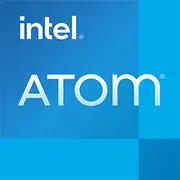Intel Atom Z2520

Intel Atom Z2520: Compact Energy Efficiency for Basic Tasks
April 2025
Introduction
The Intel Atom Z2520 processor, released in 2013, marked an era when mobile devices began to actively compete with PCs in the portability segment. Despite its outdated architecture, it is still found in budget tablets and entry-level laptops. In this article, we will explore who might be interested in this chip in 2025, what tasks it is capable of performing, and what to consider when purchasing a device based on it.
Architecture and Manufacturing Process
Cores, Frequencies, and Features
The Atom Z2520 (codename Clovertrail+) is built on the Saltwell microarchitecture (the successor to Bonnell) with a 32 nm manufacturing process. It is a dual-core CPU with support for two threads (Hyper-Threading is absent). The base frequency is 1.2 GHz, with no Turbo Boost technology.
Integrated graphics is provided by the PowerVR SGX 544MP2 with a clock speed of 300 MHz. It supports OpenGL ES 2.0 and DirectX 9 APIs, limiting its compatibility with modern games. For instance, running Angry Birds or Minecraft PE (2014 version) is possible on low settings, but projects like Genshin Impact are not feasible.
Outdated, but Specialized
The Saltwell architecture is optimized for minimal power consumption rather than high performance. The chip is ideal for:
- Android 4.x / Windows 8.1 OS (modern OS such as Windows 11 are not supported);
- Single-task mode: web browsing, document work.
Power Consumption and TDP
Only 3 Watts: Passive Cooling and Silence
The processor's TDP is 3 watts, allowing it to be used in fanless devices. For example, in tablets like the Dell Venue 7 (2014) or hybrid laptops such as the Asus Transformer Pad.
Advantages:
- No noise;
- Minimal heat generation.
Disadvantages:
- Performance drops under prolonged load (lack of Turbo Boost and weak thermal package).
Real-World Performance
Office Work
- Google Docs, LibreOffice: acceptable speed when working with texts and spreadsheets, but with limitations:
- Opening more than 5 tabs in a browser causes lag;
- Running Zoom + a browser will lead to freezes.
Multimedia
- Video: decoding 1080p (H.264) through hardware accelerators. Streaming Netflix in HD is possible but only through outdated versions of applications.
- Audio: background music playback does not load the system significantly.
Gaming
- 2010s Mobile Games: Subway Surfers, Temple Run 2 – 30-40 FPS on low settings.
- Cloud Gaming: services like Xbox Cloud Gaming are not supported due to the lack of VP9/AV1 decoder.
Use Cases
Who Is the Z2520 Relevant For in 2025?
1. Educational Devices: budget tablets for schools (e.g., Lenovo Tab 2 A10).
2. IoT Gadgets: payment terminals, information kiosks.
3. Backup Devices: for example, a cheap laptop for traveling ($200-300).
Not Suitable For:
- Photo/video editing;
- Modern gaming;
- Working with "heavy" IDEs (Visual Studio, Android Studio).
Battery Life
Up to 10 Hours of Operation
Devices with the Atom Z2520 are equipped with batteries with a capacity of 20-30 Wh, providing:
- 8-10 hours of web surfing;
- 12+ hours of reading e-books.
Power Saving Technologies:
- Intel SpeedStep – dynamic frequency adjustment;
- Disabling unused components (Wi-Fi, sensors).
Comparison with Competitors
Market from 2013 to 2015
- AMD A4-1200 (TDP 3.9 W): weaker in single-threaded tasks but better graphics (Radeon HD 8180).
- Apple A7 (iPhone 5s): 64-bit architecture, higher performance per core.
In 2025:
- MediaTek Helio A22 (12 nm, 2022): supports Android 12, 4K video;
- Intel N100 (7 nm, 2023): TDP 6 W, four times more powerful in CPU performance.
Pros and Cons
Strengths:
- Device prices starting from $200;
- Compactness (devices weighing up to 500 g);
- Compatibility with outdated software.
Weaknesses:
- No support for Windows 11/Linux with modern kernels;
- 32-bit architecture (RAM limit — up to 2 GB);
- Low performance.
Recommendations for Choosing a Laptop
What to Look for in 2025?
1. Type of Device:
- Ultra-budget tablets (e.g., Chuwi HiPad X);
- Convertible laptops with a touchscreen.
2. Specifications:
- RAM: 4 GB (but due to processor limitations, only 2 GB is effectively used);
- Storage: SSD preferred over eMMC;
- Screen: resolution 1280x800 to reduce GPU load.
3. OS: Android 4.4 or Windows 8.1.
Advice: Do not purchase such devices as a primary PC. They serve as backups for travel or "digital detox."
Final Conclusion
The Intel Atom Z2520 in 2025 is suitable for those who:
- Are looking for the lowest-cost device for basic tasks;
- Value battery life more than speed;
- Work with office applications and web services from the 2010s.
Key Benefits: price, quiet operation, portability. However, for modern tasks, it is better to consider ARM architecture processors (MediaTek, Qualcomm) or Intel N-series chips.
Prices in April 2025:
- Tablets with Atom Z2520 – $200-250;
- Convertible laptops – $280-350.
Remember: this is not an investment in performance, but a compromise in favor of affordability and compactness.
Basic
CPU Specifications
Memory Specifications
GPU Specifications
Benchmarks
Compared to Other CPU
Share in social media
Or Link To Us
<a href="https://cputronic.com/en/cpu/intel-atom-z2520" target="_blank">Intel Atom Z2520</a>